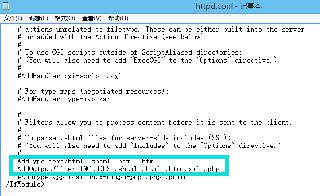java 線程池keepAliveTime的含義說明
之前對線程池中屬性:keepAliveTime比較模糊,而且看過之后過一段時間就會忘掉,于是就在此記錄一下。
keepAliveTime的jdk中的解釋為:當線程數大于核心時,此為終止前多余的空閑線程等待新任務的最長時間。
說的讓人感覺比較模糊,總結一下大概意思為:比如說線程池中最大的線程數為50,而其中只有40個線程任務在跑,相當于有10個空閑線程,這10個空閑線程不能讓他一直在開著,因為線程的存在也會特別好資源的,所有就需要設置一個這個空閑線程的存活時間,這么解釋應該就很清楚了。
這樣以后忘記了就過來看看就OK了。
補充:線程池的狀態及KeepAliveTime參數
五個狀態// runState is stored in the high-order bits private static final int RUNNING = -1 << COUNT_BITS; private static final int SHUTDOWN = 0 << COUNT_BITS; private static final int STOP = 1 << COUNT_BITS; private static final int TIDYING = 2 << COUNT_BITS; private static final int TERMINATED = 3 << COUNT_BITS;循環getTask方法
/** * Performs blocking or timed wait for a task, depending on * current configuration settings, or returns null if this worker * must exit because of any of: * 1. There are more than maximumPoolSize workers (due to * a call to setMaximumPoolSize). * 2. The pool is stopped. * 3. The pool is shutdown and the queue is empty. * 4. This worker timed out waiting for a task, and timed-out * workers are subject to termination (that is, * {@code allowCoreThreadTimeOut || workerCount > corePoolSize}) * both before and after the timed wait. * * @return task, or null if the worker must exit, in which case * workerCount is decremented */ private Runnable getTask() { boolean timedOut = false; // Did the last poll() time out? retry: for (;;) { int c = ctl.get(); int rs = runStateOf(c); // Check if queue empty only if necessary. if (rs >= SHUTDOWN && (rs >= STOP || workQueue.isEmpty())) { decrementWorkerCount(); return null; } boolean timed; // Are workers subject to culling? for (;;) { int wc = workerCountOf(c); timed = allowCoreThreadTimeOut || wc > corePoolSize; //默認allowCoreThreadTimeOut為false,除非程序指定 //(1)當沒有超過核心線程時,默認allowCoreThreadTimeOut為false時 //timed值為false,始終break掉,不會銷毀線程 //(2)當超過核心線程數,默認allowCoreThreadTimeOut為false時 //timed值為true,如果超過最大值,則銷毀;如果timeout過,則銷毀 // 如果allowCoreThreadTimeOut為true,則timed始終為true if (wc <= maximumPoolSize && ! (timedOut && timed)) break; if (compareAndDecrementWorkerCount(c)) return null; c = ctl.get(); // Re-read ctl if (runStateOf(c) != rs) continue retry; // else CAS failed due to workerCount change; retry inner loop } try { Runnable r = timed ? workQueue.poll(keepAliveTime, TimeUnit.NANOSECONDS) : workQueue.take(); if (r != null) return r; timedOut = true; } catch (InterruptedException retry) { timedOut = false; } } }線程池狀態大于SHUTDOWN值的兩種情況1、調用shutdown方法
當線程池調用了shutdown方法,線程池的狀態會首先被設置為SHUTDOWN,然后遍歷線程池中所有線程,調用一次interrupt方法,如果在休眠中的線程將會激活,激活后的線程以及調用shutdown方法本身的線程都會嘗試去調用tryTerminate方法,該方法將判定如果線程池中所有記錄的線程數為0,則將線程狀態改為TERMINATED,這個值為3,將大于SHUTDOWN狀態值。
2、調用shutdownNow方法當線程調用了shutdownNow方法后,首先將線程的狀態修改為STOP,這個狀態是大于SHUTDOWN值的,接下來它也會通過中斷激活線程,只是它來的更暴力一些,連加鎖和一些基本判斷都沒有,直接中斷;在調用tryTerminate之前會先清空阻塞隊列中所有的元素,這些元素被組裝為一個List列表作為shutdownNow方法的返回值。換句話說,沒有執行的任務在shutdownNow執行后的返回值中可以得到。在程序某些必要的情況下,可以通過線程池的isTerminating,isTerminated,isStopped,isShutdown來對線程做一些狀態判定。
KeepAliveTime參數
workQueue.poll(keepAliveTime, TimeUnit.NANOSECONDS)
當阻塞隊列中沒有任務時,等待時間達到keepAliveTime毫秒值時就會被自動喚醒,而不會永遠地沉睡下去。
keepAliveTime,如果是通過newCachedThreadPool的話,默認是1分鐘超時,如果遇到前面所提到的瞬間沖擊,那么線程池數量將瞬間快速膨脹,而且這些瞬間膨脹的線程的生命周期最少在1分鐘以上。
如果設置了該參數,那么當timeout的時候,就return null,就會跳出循環,回收線程。
if (wc <= maximumPoolSize && ! (timedOut && timed)) break; if (compareAndDecrementWorkerCount(c)) return null;
allowCoreThreadTimeout : 默認情況下核心線程不會退出,可通過將該參數設置為true,讓核心線程也退出。
默認的Executors工廠,只有newCachedThreadPool,timeout為60秒,出現timeout情況下,而且線程數超過了核心線程數,會銷毀銷毀線程。保持在corePoolSize數(如果是cached的,corePoolSize為0)。
/** * Timeout in nanoseconds for idle threads waiting for work. * Threads use this timeout when there are more than corePoolSize * present or if allowCoreThreadTimeOut. Otherwise they wait * forever for new work. */ private volatile long keepAliveTime; /** * If false (default), core threads stay alive even when idle. * If true, core threads use keepAliveTime to time out waiting * for work. */ private volatile boolean allowCoreThreadTimeOut;
線程池最小是corePoolSize,最大是maximumPoolSize,除非設置了allowCoreThreadTimeOut和超時時間,這種情況線程數可能減少到0,最大可能是Integer.MAX_VALUE。
Core pool size is the minimum number of workers to keep alive(and not allow to time out etc) unless allowCoreThreadTimeOut is set, in which case the minimum is zero.
/** * Creates a thread pool that creates new threads as needed, but * will reuse previously constructed threads when they are * available. These pools will typically improve the performance * of programs that execute many short-lived asynchronous tasks. * Calls to <tt>execute</tt> will reuse previously constructed * threads if available. If no existing thread is available, a new * thread will be created and added to the pool. Threads that have * not been used for sixty seconds are terminated and removed from * the cache. Thus, a pool that remains idle for long enough will * not consume any resources. Note that pools with similar * properties but different details (for example, timeout parameters) * may be created using {@link ThreadPoolExecutor} constructors. * * @return the newly created thread pool */ public static ExecutorService newCachedThreadPool() { return new ThreadPoolExecutor(0, Integer.MAX_VALUE, 60L, TimeUnit.SECONDS, new SynchronousQueue<Runnable>()); } /** * Creates a thread pool that creates new threads as needed, but * will reuse previously constructed threads when they are * available, and uses the provided * ThreadFactory to create new threads when needed. * @param threadFactory the factory to use when creating new threads * @return the newly created thread pool * @throws NullPointerException if threadFactory is null */ public static ExecutorService newCachedThreadPool(ThreadFactory threadFactory) { return new ThreadPoolExecutor(0, Integer.MAX_VALUE, 60L, TimeUnit.SECONDS, new SynchronousQueue<Runnable>(), threadFactory); }
超時timeout設置為0的話,表示不等待
public E poll(long timeout, TimeUnit unit) throws InterruptedException { return pollFirst(timeout, unit); }具體如下
public E pollFirst(long timeout, TimeUnit unit) throws InterruptedException { long nanos = unit.toNanos(timeout); final ReentrantLock lock = this.lock; lock.lockInterruptibly(); try { E x; while ( (x = unlinkFirst()) == null) { if (nanos <= 0) return null; nanos = notEmpty.awaitNanos(nanos); } return x; } finally { lock.unlock(); } }
以上為個人經驗,希望能給大家一個參考,也希望大家多多支持好吧啦網。如有錯誤或未考慮完全的地方,望不吝賜教。
相關文章:

 網公網安備
網公網安備